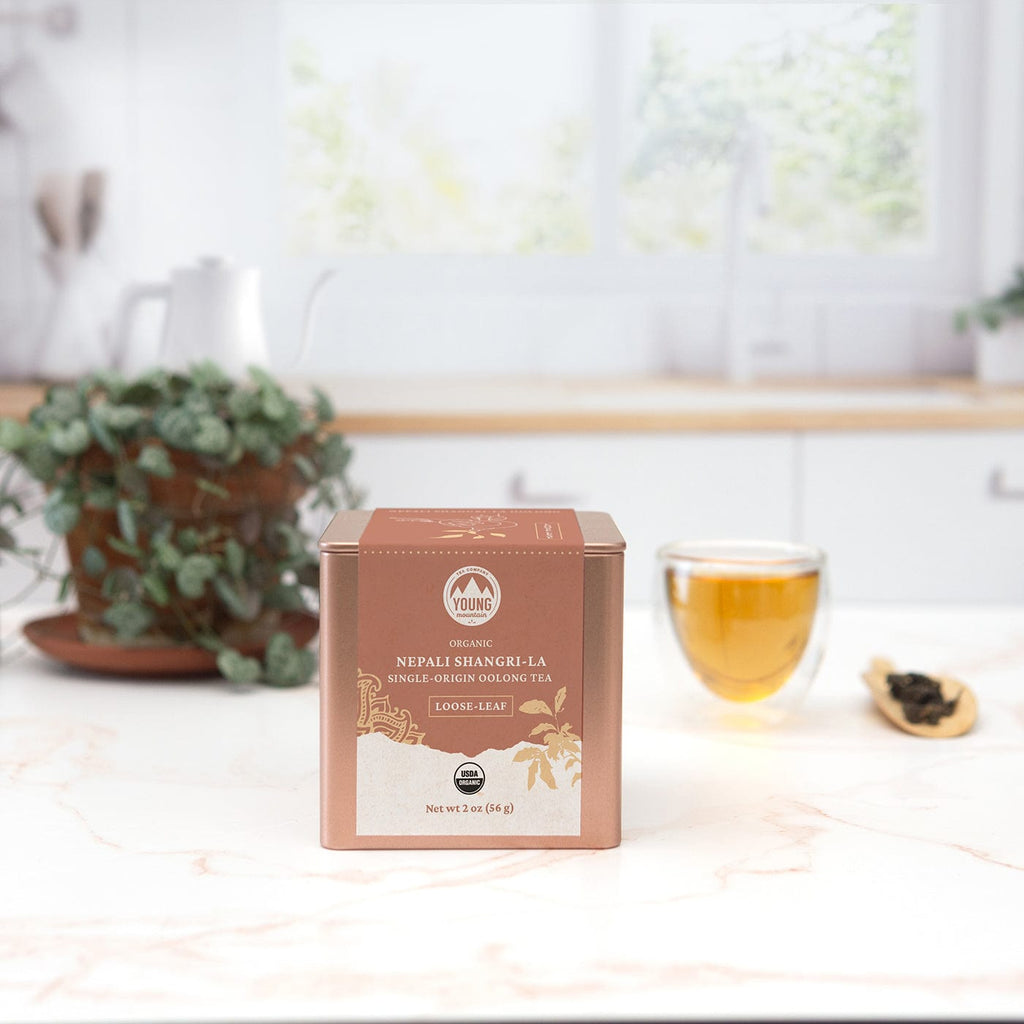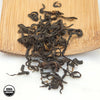




$35.99
Taste: Tart raspberry & roasted walnut
Origin: Phidim, Eastern Nepali Himalayas
Producer: Kanchenjunga Tea Estate
Infusion Suggestions:
Steep 1 1 Tbsp /2.5 g | 8 oz | 190° F | 3.5 min
Steep 2 8 oz | 195° F | 4.5 min
Certifications: USDA Organic
Contains Caffeine
Nepali Shangri-La Oolong is a well-shaped creation from the tea makers at Kanchenjunga Tea Estate. Carrying bright, fruity notes of tart raspberry, it escapes typical classifications types of tea, highlighting the way Nepali tea makers are exploring new styles of tea.
Tasting Notes: This tea straddles the line between a light fruity black tea and a dark-roasted oolong. It carries bright, fruity notes of raspberry reminiscent of nearby Darjeeling’s Second Flush, a black tea, balanced by the nuanced honey flavors in China’s Tie Guan Yin, an oolong (also commonly called “Oriental Beauty.”) However, an unexpected current of roasted walnuts runs through this tea’s body, making it completely distinct. We spent hours discussing if we should classify these teas as blacks or oolongs, and in the end decided it’s best to simply enjoy it for what it is and forget about labels. Lovers of Darjeeling teas, Taiwanese dark oolongs, or Tea Studio’s Nilgiri Beauty Oolong will likely enjoy this tea.
Production: This tea is made using a process that blends the techniques of heavy roasted Taiwanese oolongs with classic India black tea practices. In a nod to oolongs, the tea makers put this through multiple rolling and oxidization steps. However to ground themselves in processing styles more familiar from South Asia, they leave the tea in large open racks to oxidize, as opposed to deeper piles like an oolong. At about 70% oxidization, the processing is stopped by putting the tea leaf through a dryer to finish the tea.
Region: Nepal’s best-known tea growing regions are in the far eastern part of the country, bordering India and in the shadows of Mt. Everest. While tea has long been part of eastern Nepal’s past, it lacked the market access to establish its own identity. As a result, most Nepali tea has historically been sold as knock-off Darjeeling, given the two region’s nearly identical soils. The birth of an independent Nepali tea industry is being led by small-scale farmers whose families have moved fluidly throughout the region, long before Nepal and India were separate countries. As generations of community members traveled between eastern Nepal and northeastern India, many of Darjeeling’s Camellia sinensis saplings and secrets came with them. The emerging region is blending expertise with invention, and, in the process, paving a new model for tea in South Asia. expertise with invention, and in the process, paving a new model for small farmer tea in South Asia. Read our blog about this region here.
Tea Makers: Located in the lush forests near Nepal's eastern border is the Kanchenjunga Tea Estate – a tea garden named after the third highest peak in the world. The garden was established by Mr. Deepak Banskota, an icon in the Nepali tea movement. When he was an enterprising teenager, Banskota visited nearby Darjeeling and saw how making tea could create opportunities for his village to advance. When he returned home, he enthusiastically convinced other local farmers to band together to grow tea. Over the years, hundreds of local farmers joined the effort.
Impact: Kanchenjunga is an innovator in Nepali tea. The estate’s official name is the Kanchenjunga Tea Estate and Research Center, and it was the first in Nepal to be certified organic. Today it operates as a cooperative that offers robust scholarship programs to members’ children. Additionally, the garden is pioneering new sustainable practices, including using renewable energy for drying its tea and intercropping native species to promote biodiversity. The Bansokta family is continually working to develop global supply chains that elevate the stature of Nepali tea worldwide.
Packaging: Our commitment to sustainability means we offer our teas in several types of packaging:
